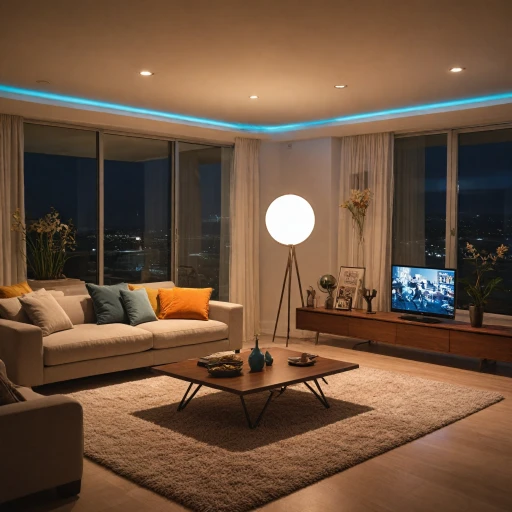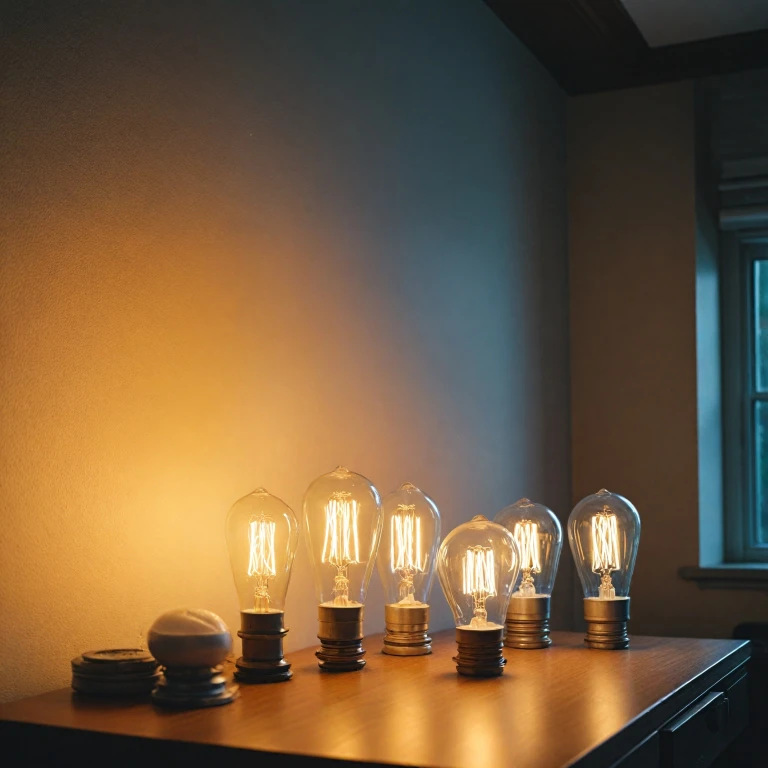Understanding C7 and C9 Light Bulbs
Exploring the Features and Applications of C7 and C9 Bulbs
Are you seeking to upgrade your holiday lighting or simply want to understand the various bulb types available? Then, exploring C7 and C9 light bulbs is a must for any lighting enthusiast. These bulbs are common staples in the realm of holiday lights, particularly for Christmas displays, and they stand out not only in their size but in their suited applications as well.
- Size and Base: C7 and C9 bulbs differ primarily in size. C7 bulbs are generally smaller, more compact, and work well for indoor displays or decorating Christmas trees. Meanwhile, C9 bulbs are larger, making them ideal for outdoor and commercial lighting displays. Their size makes C9 bulbs more visible from a distance, perfect for catching the eye with your light displays.
- Color and Variety: Both C7 and C9 bulbs come in various colors and finishes, from classic white to vibrant hues, allowing for creative holiday lighting designs. You can choose between incandescent and led variations, depending on your aesthetic and functional needs. Led Christmas bulbs, in particular, offer longer lifespans and energy efficiency.
- Material Composition and Durability: C7 bulbs often use glass, which can offer a soft, warm white glow, reminiscent of tradition. On the other hand, C9 bulbs, especially those designed for outdoor lighting, are typically constructed with durable plastic to withstand the elements. If you're considering leds, you’ll also benefit from a reduction in heat output and increased safety.
- Energy Consumption: Traditional incandescent bulbs might provide a nostalgic feel, however, leds are the way forward when considering energy efficiency and reducing electricity costs. Choosing the right light bulb can significantly impact your energy bills during the holiday season. For more information on energy-efficient lighting solutions, you might find this benefits and challenges of T10 smart light bulbs guide useful.
Understanding these aspects can aid in making an informed decision on whether C7 or C9 bulbs best fit your lighting purposes, aligning with both your aesthetic vision and functional needs.
Energy Efficiency in Smart Lighting
Maximizing Energy Savings with Smart Lighting
When you think of smart lighting, one of the most significant benefits it offers is energy efficiency, especially when using LED bulbs. Both C7 and C9 bulbs can help you save on electricity bills compared to traditional incandescent bulbs. These modern
led bulbs are designed to provide sufficient illumination with minimal energy consumption, making them an excellent choice for both indoor and outdoor holiday lighting displays.
- LED Efficiency: LED Christmas lights boast an impressive reduction in energy usage. These bulbs use a fraction of the power required by incandescent bulbs, while still delivering bright, vibrant colors for your festive lighting.
- Long Lifespan: LED light bulbs can last up to 25 times longer than traditional options. This longevity translates to fewer replacements, reducing waste and contributing to environmental sustainability.
- Heat and Safety: Another crucial factor is that LED lights produce very little heat. This increases safety by minimizing the risk of fire, an important consideration when decorating large Christmas trees or creating intricate lighting displays.
While the initial cost of LEDs might be higher, the savings in energy costs over time and the reduced frequency of replacing bulbs make them a wise investment. Whether it's the warm white glow or pure white brilliance you desire, LED lights provide an extensive range of options to fit your aesthetic preference without compromising on energy efficiency.
Compatibility with Smart Home Systems
The Intersection of Smart Lights and Home Systems
When it comes to integrating smart lights like C7 and C9 bulbs into your existing home system, compatibility is paramount. Not all bulbs seamlessly connect to every smart system, which can affect your choice, especially concerning your smart lighting arrangements during the holiday season or year-round.
- Assessing System Compatibility: Before purchasing, ensure that your chosen bulbs are compatible with your smart home system. Popular options like Amazon Alexa or Google Assistant can turn your space into an intelligent lighting haven, managing everything from your holiday lights to everyday essential lighting.
- Connectivity Options: With the rise of Bluetooth and Wi-Fi-enabled lighting, controlling lights from your smartphone becomes seamless. But remember that each system offers varying degrees of control, impacting how you manage power consumption, especially when using energy-efficient LED options. For a deeper understanding of how Bluetooth-enabled systems can expand your control, explore Bluetooth LED controller zones.
- Integration with Other Devices: Smart bulbs must work cohesively with other smart devices, including thermostats, security cameras, and more, ensuring you're optimizing energy use around your home. Carefully evaluate manufacturers' products to ensure their devices—or intended devices—effectively integrate with your lighting preference.
- Consideration for Outdoor Use: If you're planning to use smart bulbs for outdoor or larger lighting displays, verify that the smart systems you intend to use support outdoor lighting and are compatible with specific needs, such as weather-proofing and durable connectivity.
- Color Matching: Whether it's warm white or pure white, ensuring color consistency across bulbs and devices in your smart system can enhance your lighting display and create desired ambiance, whether it's for festive Christmas lighting or commercial setups.
Having the right compatibility with your smart system can also impact cost savings in the long run, as you can efficiently manage energy use throughout the year. As always, consider the aesthetic and functional aspects of the bulbs to ensure they suit both your home and holiday needs.
Cost Considerations
Financial Implications of Smart Lighting Choices
When selecting between C7 and C9 light bulbs, understanding their cost dynamics can play a pivotal role in decision-making. While both sizes have their unique application, the price can vary significantly based on several factors such as type, brightness, and technology.
Here's a breakdown of what you need to consider cost-wise:
- Type of Bulb: LED bulbs, although more expensive upfront than incandescent ones, offer energy savings and a longer lifespan, potentially leading to reduced overall costs. When planning holiday lighting for Christmas trees, or larger outdoor displays, consider investing in LEDs to optimize long-term savings.
- Brightness and Color: Depending on your lighting display needs, choosing warm white or pure white LED light configurations might come at different price points. Moreover, colored LEDs for a festive look might add to your budget.
- Energy Consumption: In section 2, we explored energy efficiency with smart lighting. This can be a significant cost factor. Bulbs that consume less energy, like LED lights, can significantly lower your electricity bill especially when these lights are used extensively for holiday lighting or commercial use.
- Durability and Material: Glass-based bulbs might cost more than plastic variations, adding to their overall price. However, this cost might be justified with increased aesthetic appeal and durability in outdoor settings.
- Scale of Purchase: Commercial installations using sizable quantities of bulbs might impact pricing. Mini lights or bulbs purchased in bulk can often be discounted, making larger lighting projects more affordable.
As you consider these factors, weigh the long-term benefits of each choice, keeping in mind both aesthetics and functional longevity. Smart lighting choices don’t just illuminate your space but also brighten financial prudency in the long haul.
Aesthetic and Functional Differences
Visual Appeal and Usability: C7 vs. C9 Light Bulbs
Understanding the aesthetic and functional differences between C7 and C9 light bulbs is essential when planning your holiday lighting or any decorative display. The choice between these bulbs can significantly influence the look and feel of your lighting setup.
C7 light bulbs are typically smaller with a slim base, making them ideal for indoor holiday decorations like Christmas trees or closer, intimate spaces where a subtler glow is desired. They offer a cozy and warm ambiance, especially the incandescent versions, which emit a soft, warm white light that many associate with traditional holiday lighting.
On the other hand, C9 bulbs are larger and deliver a bolder illumination suitable for outdoor lighting and large commercial displays. Their size and brightness make them a standout option for outlining pathways, rooftops, or larger structures, drawing attention to any festive activity or celebration.
When it comes to color and material options, both C7 and C9 lights are available in a variety of hues and finishes. Modern LEDs offer pure white, cool white, and multicolored options that outshine and outlast traditional incandescent bulbs, adding to their popularity across home and commercial use. The shift towards LED bulbs also means greater energy efficiency, a topic explored in more detail through the lens of energy savings.
In summary, whether you choose C7 or C9 bulbs largely depends on the size of your lighting display and the specific ambiance you wish to create. For a classic, cozy feel indoors, you might prefer the smaller C7 bulbs, while C9 bulbs would better serve large-scale festive and outdoor lighting arrangements.
Choosing the Right Bulb for Your Needs
Finding the Perfect Fit for Your Lighting Goals
Selecting the right bulb involves evaluating your lighting goals, including both aesthetic desires and functional requirements. With the array of options available—from C7 and C9 sizes to LED and incandescent types—it's vital to consider various factors.
- Purpose and Display: If you're primarily setting up holiday lighting, such as for Christmas trees or outdoor displays, consider C9 bulbs. Their larger size makes them more visible and impactful when used for lighting displays. However, for more delicate and subtle arrangements, C7 bulbs and mini lights might be more appropriate as they offer a softer luminescence.
- Energy Efficiency: LED bulbs surpass traditional incandescent bulbs in terms of energy savings, which can significantly affect your electricity bills during extensive usage periods, like the holiday season. LED Christmas lights also tend to last longer, making them a smart economic choice.
- Compatibility and Base Size: Ensure that your chosen light bulbs fit your existing lighting fixtures. C7 and C9 bulbs differ not only in size but also in base size, which can impact compatibility with your existing installations, especially with smart home systems. Consider these technical aspects to avoid mismatches.
- Color and Aesthetics: The ambiance desired also plays a role in choosing the correct type of bulb, with white LED bulbs and warm white options offering different moods. For a more classic look, incandescent bulbs deliver a warmer, traditional light, whereas LEDs provide the versatile option of pure white or multi-color lights.
In conclusion, when choosing between C7 and C9 bulbs, along with considering LEDs for your lighting needs, factor in the intended use, energy efficiency benefits, system compatibility, and desired aesthetics to achieve your perfect lighting solution.

